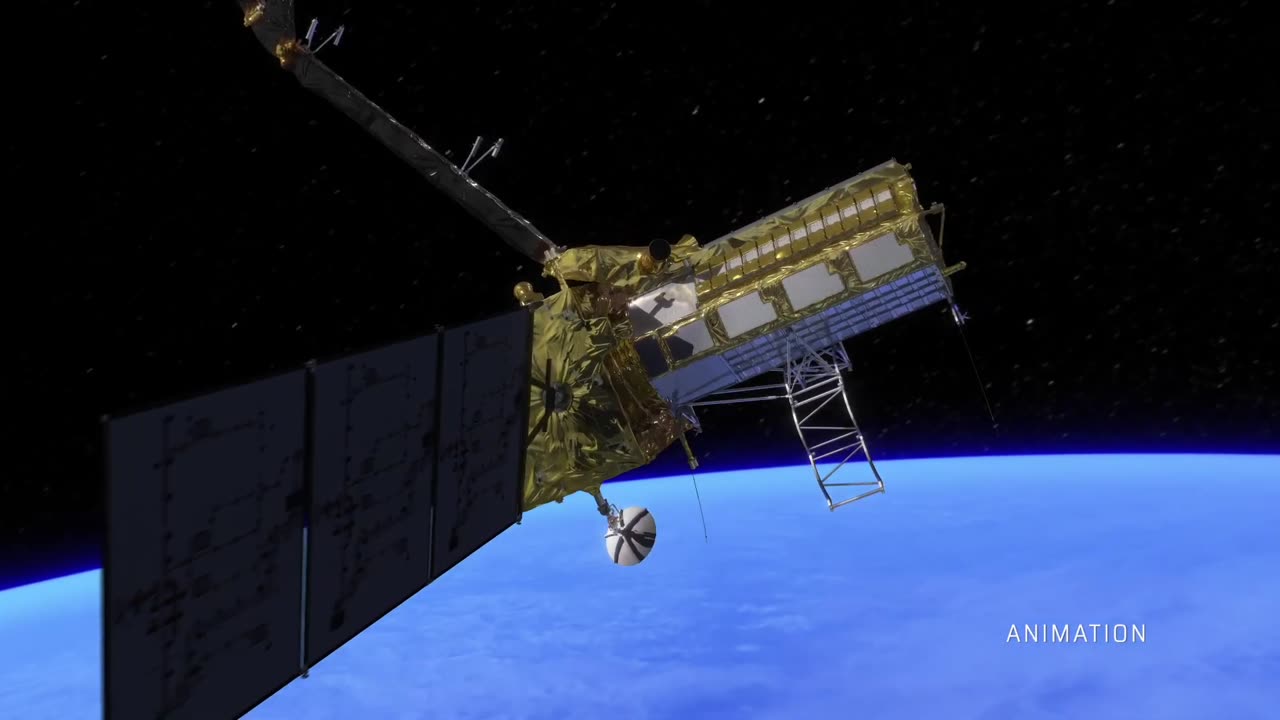Premium Only Content

How Fieldwork in the Amazon Is Supporting NASA Climate Science – NISAR Mission Travelogue
#nasa #amazon #fieldwork #climate #climatescience #science #NISAR #travelogue #nasamission #nasaclimatescience #earthexploration #solar #solarsystem #moon #nisarmission #satellite #satellitemission #spacemission #earth #wolfchamp
How Fieldwork in the Amazon Is Supporting NASA Climate Science – NISAR Mission Travelogue
A joint U.S.-India satellite mission called NISAR – the NASA-ISRO Synthetic Aperture Radar (NISAR) mission – will soon set out with new tools to better understand climate change. As a way to validate the satellite’s global, space-based observations, NASA scientists went to the Peruvian Amazon to install a network of sensors that will help calibrate measurements from the NISAR spacecraft.
Why the Amazon? In tropical wetlands, changes in seasonal flooding cycles can lead to increased production of greenhouse gases like methane and carbon dioxide.
A collaboration between NASA and ISRO (Indian Space Research Organisation), NISAR will use a sophisticated radar system to track wetland inundation and other changes to Earth’s surface. The satellite is expected to launch in early 2024 from ISRO’s Satish Dhawan Space Centre in Sriharikota, India.
For more information on the NISAR mission, visit: https://nisar.jpl.nasa.gov/.
Credit: Video production and NISAR animations: NASA/JPL-Caltech; Methane animations: NASA’s Scientific Visualization Studio; Amazon field work footage courtesy of A. Pruna
How Fieldwork in the Amazon Is Supporting NASA Climate Science – NISAR Mission Travelogue
A joint U.S.-India satellite mission called NISAR – the NASA-ISRO Synthetic Aperture Radar (NISAR) mission – will soon set out with new tools to better understand climate change. As a way to validate the satellite’s global, space-based observations, NASA scientists went to the Peruvian Amazon to install a network of sensors that will help calibrate measurements from the NISAR spacecraft.
Why the Amazon? In tropical wetlands, changes in seasonal flooding cycles can lead to increased production of greenhouse gases like methane and carbon dioxide.
A collaboration between NASA and ISRO (Indian Space Research Organisation), NISAR will use a sophisticated radar system to track wetland inundation and other changes to Earth’s surface. The satellite is expected to launch in early 2024 from ISRO’s Satish Dhawan Space Centre in Sriharikota, India.
For more information on the NISAR mission, visit: https://nisar.jpl.nasa.gov/.
Credit: Video production and NISAR animations: NASA/JPL-Caltech; Methane animations: NASA’s Scientific Visualization Studio; Amazon field work footage courtesy of A. Pruna
How Fieldwork in the Amazon Is Supporting NASA Climate Science – NISAR Mission Travelogue
A joint U.S.-India satellite mission called NISAR – the NASA-ISRO Synthetic Aperture Radar (NISAR) mission – will soon set out with new tools to better understand climate change. As a way to validate the satellite’s global, space-based observations, NASA scientists went to the Peruvian Amazon to install a network of sensors that will help calibrate measurements from the NISAR spacecraft.
Why the Amazon? In tropical wetlands, changes in seasonal flooding cycles can lead to increased production of greenhouse gases like methane and carbon dioxide.
A collaboration between NASA and ISRO (Indian Space Research Organisation), NISAR will use a sophisticated radar system to track wetland inundation and other changes to Earth’s surface. The satellite is expected to launch in early 2024 from ISRO’s Satish Dhawan Space Centre in Sriharikota, India.
For more information on the NISAR mission, visit: https://nisar.jpl.nasa.gov/.
Credit: Video production and NISAR animations: NASA/JPL-Caltech; Methane animations: NASA’s Scientific Visualization Studio; Amazon field work footage courtesy of A. Pruna
How Fieldwork in the Amazon Is Supporting NASA Climate Science – NISAR Mission Travelogue
A joint U.S.-India satellite mission called NISAR – the NASA-ISRO Synthetic Aperture Radar (NISAR) mission – will soon set out with new tools to better understand climate change. As a way to validate the satellite’s global, space-based observations, NASA scientists went to the Peruvian Amazon to install a network of sensors that will help calibrate measurements from the NISAR spacecraft.
Why the Amazon? In tropical wetlands, changes in seasonal flooding cycles can lead to increased production of greenhouse gases like methane and carbon dioxide.
A collaboration between NASA and ISRO (Indian Space Research Organisation), NISAR will use a sophisticated radar system to track wetland inundation and other changes to Earth’s surface. The satellite is expected to launch in early 2024 from ISRO’s Satish Dhawan Space Centre in Sriharikota, India.
For more information on the NISAR mission, visit: https://nisar.jpl.nasa.gov/.
Credit: Video production and NISAR animations: NASA/JPL-Caltech; Methane animations: NASA’s Scientific Visualization Studio; Amazon field work footage courtesy of A. Pruna
How Fieldwork in the Amazon Is Supporting NASA Climate Science – NISAR Mission Travelogue
A joint U.S.-India satellite mission called NISAR – the NASA-ISRO Synthetic Aperture Radar (NISAR) mission – will soon set out with new tools to better understand climate change. As a way to validate the satellite’s global, space-based observations, NASA scientists went to the Peruvian Amazon to install a network of sensors that will help calibrate measurements from the NISAR spacecraft.
Why the Amazon? In tropical wetlands, changes in seasonal flooding cycles can lead to increased production of greenhouse gases like methane and carbon dioxide.
A collaboration between NASA and ISRO (Indian Space Research Organisation), NISAR will use a sophisticated radar system to track wetland inundation and other changes to Earth’s surface. The satellite is expected to launch in early 2024 from ISRO’s Satish Dhawan Space Centre in Sriharikota, India.
For more information on the NISAR mission, visit: https://nisar.jpl.nasa.gov/.
Credit: Video production and NISAR animations: NASA/JPL-Caltech; Methane animations: NASA’s Scientific Visualization Studio; Amazon field work footage courtesy of A. Pruna
-
 LIVE
LIVE
PandaSub2000
1 day agoLIVE 10/3 @10pm ET | SUPER MARIO GALAXY 1 & 2 on SWITCH 2
124 watching -
 1:26:04
1:26:04
Glenn Greenwald
6 hours agoJournalist Ken Klippenstein on Trump's New Domestic Terrorism Memo; Glenn Takes Your Questions on Bari Weiss's CBS Role, His Interview with Nick Fuentes, and More | SYSTEM UPDATE #526
66.3K43 -
 LIVE
LIVE
SynthTrax & DJ Cheezus Livestreams
2 days agoFriday Night Synthwave 80s 90s Electronica and more DJ MIX Livestream GOTH NIGHT Special Edition
230 watching -
 DVR
DVR
Mally_Mouse
5 days agoFriend Friday!! 🎉 - Let's Play! - Lockdown Protocol
20.1K -
 LIVE
LIVE
MissesMaam
3 hours ago*Spicy* Friend Friday LOCKDOWN Protocol!!! :: SpookTober 💚✨
130 watching -
 41:36
41:36
MattMorseTV
4 hours ago $10.73 earned🔴Portland just made a BIG MISTAKE.🔴
33.7K61 -
 LIVE
LIVE
LFA TV
1 day agoLIVE & BREAKING NEWS! | FRIDAY 10/3/25
410 watching -
 4:07:27
4:07:27
Nerdrotic
7 hours ago $8.59 earnedHollywood is TARIFFied, James Gunn Attacks Fans, Bill Burqa, RoP is Doomed | Friday Night Tights 374
71.4K9 -
 LIVE
LIVE
Eternal_Spartan
12 hours ago🟢 Eternal Spartan Plays Destiny 2 | The Best PVP/PVE Action!| USMC Veteran
33 watching -
 LIVE
LIVE
Jorba4
2 hours ago🔴Live-Jorba4- Borderlands 4
18 watching
